Thematic selection of games and exercises for young children on the topic "Spikelet"
Objectives:
Continue teaching children to listen carefully to the story. Watch the screening of the table theater, emotionally perceive the content.
To acquaint children with the fairy tale “Spikelet.
Enrich children's vocabulary on the topic.
To form stable ideas about size, quantity, color, geometric shapesoh.
Exercise in modeling, sticking, drawing with fingers, brushes and pencils.
Develop the ability to repeat movements for the teacher.
Develop thinking, motor skills, visual and auditory concentration, coordination of movements.
Foster interest in fairy tales.
Equipment:
Toys-heroes of the fairy tale "Spikelet", wheat spikelets, wheat grains, flour, dough.
Colored silhouettes of a cockerel, house, mice, spikelet, picture background.
Picture blank "spikelet" for finger drawing, finger paints, yellow pencils.
Plasticine is yellow.
Blank picture "Spikelets without stems", yellow gouache, brushes.
Background picture with a forest, a mouse, a fox, two mushrooms under a tree; leaves of different sizes cut out of cardboard.
Background picture with the image of a spikelet made of ovals, ovals cut from yellow cardboard, counting sticks.
Spikelets cut from thick cardboard, multi-colored clothespins.
Buttons of different colors and sizes, a picture depicting a pie with colored circles, the color and size corresponding to the buttons.
A blank picture with the image of trays of different shapes, silhouette pictures of a round bun, an oval braid, a square pie. Glue, poppy seeds, sesame seeds, red plasticine.
Napkins, saucers, cups, spoons cut out of colored cardboard.
Rolls. Sieve. Peas (not shelled).
Audio recording: "Top-top".
Course of the lesson:
Welcome game "Our smart heads"
Our smart heads
They will think a lot, cleverly.
The ears will listen
Mouth speak clearly.
The handles will clap
Legs will stomp.
The backs are straightening
We smile at each other.
Today we will meet with a fairy tale.
Show of the table theater "Kolosok"
Once upon a time there were two little mice, Cool and Vert, and the cockerel Vocal neck. Mice only knew how to sing and dance, twirl and twirl. The cockerel got up early in the morning, first woke everyone up with a song, and then got down to work.
Once the cockerel was sweeping the yard and saw a spikelet of wheat on the ground. Called the cockerel mice:
- Cool and Vert, look what I found!
Mice came running and say:
- We need to thresh it.
- Who will thresh? - asked the cockerel.
- Not me! - squeaked Cool.
- Not me! - squeaked Vert.
- All right, - said the cockerel, - I will thresh.
And he set to work. Meanwhile, the mice started playing rounders.
The cock finished threshing and shouted:
- Hey, Cool, hey, Vert, look how much grain I have ground!
The mice came running and squealed in one voice:
- Now we need to carry the grain to the mill, grind flour.
- Who will carry it? - asked the cockerel.
- Not me! - answered Cool.
- Not me! - Vert answered.
- Okay, - the cockerel said, - I will carry the grain to the mill.
He put a sack on his shoulders and went. And the little mice started a game of leapfrog. They jump over each other, have fun.
The cockerel returned from the mill and called the mice:
- Here, Cool, here, Vert! I brought flour.
The little mice came running, they looked, they weren't happy:
- Oh yes cockerel! Well done! Now you need to knead the dough and bake the bread.
- Who will knead? - asked the cockerel.
And the mice are again their own:
- Not me! - Krut squeaked.
- Not me! - squeaked Vert.
Thought, thought the cockerel and said:
- I guess I'll have to.
The cockerel kneaded the dough, brought firewood, lit the oven. As the oven was fired, he planted bread in it.
Mice do not waste time either: they dance, but they sing songs.
I baked some bread, took out the cockerel, put it on the table, and the mice were right there. And I didn't have to call them.
- Oh, and I'm hungry! - squeaked Cool.
- Oh, how I want to eat! - squeaked Vert.
Rather, they sat down at the table. And the cock says to them:
- Wait, wait! First tell me who found the spikelet?
- You found! - the mice screamed loudly.
- Who threshed the spikelet? the cock asked again.
- You thrashed! - both said more quietly.
- And who carried grain to the mill?
- You, too, - Krut and Vert answered quite quietly.
- Who kneaded the dough? Did you carry firewood? He stoked the oven, who baked the bread?
- All of you. All of you, - the mice squeaked almost audibly.
- What did you do?
I don't know what to say to the little mice. Steep and Vert began to crawl out from the table, but the cockerel does not hold them back.
There is nothing to treat such idlers and lazy people with bread!
Didactic game "Lay out a fairy tale in a picture"
Find in the picture a place for a hut, for a cockerel and mice. Place the spikelet under the tree.
Didactic game "Hide the mouse from the fox"
The mice decided to improve themselves - to make the pie ourselves and treat the cockerel. One mouse kneaded the dough, and the other went into the forest to collect mushrooms for the pie.

The mouse came to the forest and saw the mushrooms. Do you see mushrooms in the picture? Where are they? Under the tree. How many mushrooms are under the tree? Two mushrooms.
But the little mouse was not lucky, he just wanted to pick mushrooms - he caught the eye of a fox. Rather pick up a leaf suitable sizeto hide the mouse from the fox.
Didactic game "Fold a spikelet"
What geometric shapes will we use to form a spikelet? From ovals. How many spikelets do you have in the picture? One spikelet. And how many oval-shaped seeds are needed for one spikelet? Lot. Lay out the ovals over the picture. Now use the counting sticks to make the antennae spikelet.

Drawing "Spikelet"
Draw a spikelet antennae with a yellow pencil. Leave your fingerprints in place of the kernels in the spikelet.

Molding "Spikelet"
Roll a sausage out of yellow plasticine by straight rolling and attach it to the cardboard, lightly press it down with your palm. Place a toothpick stick on top of the spikelet sausage (lengthwise) and press. Now take wheat grains and press on both sides of the stick.
Didactic game "What is gone"
A spikelet, bun, dough are laid out in front of the children. Cover with a scarf. One item is hiding. Then the scarf is removed and the children are invited to tell which object is gone.
Musical-dynamic pause "Top-top"
Children repeat the movements to the music shown by the teacher.
Playing with clothespins "Spikelet"
Make antennae out of clothespins.
Game with buttons "Pie"
Arrange the buttons into circles of the appropriate color and size.

Visual activity "Pies and buns"
Place cake and rolls on trays. Choose a tray that fits your shape.
Sprinkle a round bun with poppy seeds (pre-greased with glue), and an oval bun with sesame seeds. But let's make a cake with cherries - stick circles-cherries on the cake from red plasticine.


Didactic game "Tea set"
Match each saucer with a cup and a spoon and place them on napkins of the appropriate color.
Painting with paints "Stems of spikelets"
Draw the stems and spikelets with a brush.

Exercise "Sifting flour through a sieve"
Children are encouraged to spoon the flour into a sieve and sift the flour over a tray.
Salted dough modeling "Pie"
Children make a ball out of salted dough, flatten it into a cake, roll out thin sausages and spread it on a pie with a net. Peas are pressed into free places.
Didactic exercise "What first, what then"
First, the cockerel found a spikelet, show the spikelets.
Then he took the grains from the spikelet. Show the grains.
Made flour from the grains. Show flour.
Made dough out of flour. Show the dough.
Made a pie out of dough. I'll show you the cake. And I suggest you try it.
Pie tasting is provided.
Municipal budgetary preschool educational institution kindergarten №15 "Yolochka"
CO ns p ect OD
Topic: "Unconventional drawing technique: poking with a cotton swab"
Teacher: E.E. Kotlyarova
baltiysky
2016 year
Software content
Purpose:
to introduce students to unconventional poke techniques.
Tasks:
Educational:
to form the ability to draw with gouache using a poke (cotton swab);
continue to develop the ability to apply a pattern over the entire surface;
convey features in a drawing appearance wheat ear;
expand the understanding of cereals
help in the assimilation and application of this technique in their own creativity;
expand the stock of knowledge about the variety of color shades.
Educational:
To develop in children a sense of beauty, artistic taste, creativity;
Foster a caring attitude towards nature.
Correctional and developmental:
To develop memory, attention, eyes, imagination and perception of the surrounding world, aesthetic taste.
Material :
Cotton swab
thick gouache;
sheets of paper of any color and size;
thin, squirrel brush;
a small piece of paper;
stand for brushes;
a jar of water;
napkin;
simple pencil;
oilcloth for the table.
THE METHODOLOGY OF THE LESSON.
Hello guys! At the beginning of the lesson, let's guess the riddle:
Grew up in field house,
The house is full of grain.
The walls are gilded
The shutters are boarded up.
The house is shaking
On a pillar in gold.
(That's right, it's a spikelet)
Let's remember what we know about an ear of wheat.
Children's answers.
Wheat is a genus of herbaceous, mainly annuals, plants of the Cereals, or Bluegrass family, the leading grain crop in many countries.
The flour obtained from the grains of wheat is used for baking bread, making pasta and confectionery. Wheat is also used as a forage crop.
Today I suggest you draw a spikelet of wheat in a drawing technique that is new to us. And it is called the poke method. Before drawing, let's do some exercises.
Physical culture minute "A grain fell into the ground" (to the music of the musical director):
1. A grain got into the ground.
(Children squat down, press their head to their knees and cover it with their hands)
2. It began to germinate in the sun.
(Children raise their hands up above their heads, saying:
“Golden sun, you warm us a grain! "
“Rain, rain, water! There will be a harvest of bread! "
(Children stretch their arms forward, palms up and "spray" water on themselves.)
3. The rain watered the ground, and the sprout grew!
(Children get up slowly).
4. Stretched towards the light and warmth (arms to the sides)
5. And he turned around handsomely (hands forward).
6. Golden spikelets sway in the wind,
(Children stand on tiptoes, raise straight arms up, hands down).
7. Lean low.
Children wave their arms raised up and say:
“The harvest is ripe! Come take it away!
(Bends down)
Explanation of the way of working.
Look at your branches drawn on the leaves, but these are not spikelets yet to get spikelets you need to draw the grains, take a cotton swab with three fingers, like a brush. Let's dip it in gouache. (The teacher shows). Look, I have very little paint on my stick, I need a little of it. And now we attach the stick to the paper, keep it tilted a little. Please note that we do not dip the stick into the water. This is how we will draw seeds on one and the other side.
How to draw correctly in this technique? I will show, and you repeat after me, first without paint. First, we poke along the line to the left, leaving no gap between the pokes. Then on the right.
Now our lesson has come to an end. Let's admire the work done, see what kind of wheat field we got.
The lesson is dedicated to all nerds and gluttons. You will see how to draw wheat with a pencil step by step. Naturally, I'm not going to draw the whole, but I will show a few spikelets:
Wheat is an edible herb. Many goodies are made from it: bread, pasta, sweets, beer and other noble drinks. So both adults and children love her. True, no one likes to grow, grind, and process, but this is a completely different conversation. To depict a spikelet of wheat requires a lot of patience and care. There is no special image technique here, the more you do not need to observe proportions. There are so many types and varieties of wheat that she herself does not even know which one will grow. On the other hand, it must be done beautifully, repeat after me.
How to draw wheat with a pencil step by step
Step one. We make a sketch in the form of a reed.  Step two. Add round shapes similar to.
Step two. Add round shapes similar to.  Step three. Correct the contours, add antennae.
Step three. Correct the contours, add antennae.  Step four. Add shading and large tendrils. Done:
Step four. Add shading and large tendrils. Done:  Try to depict more such plants.
Try to depict more such plants.
General Education Department
Rtishchevsky district of the Saratov region
Municipal preschool educational institution
"Kindergarten No. 12" Zvezdochka ". G. Rtischevo, Saratov region "
Abstract drawing
Topic; "Bread is the head of everything"
Educator: Kolomiets V.E.
2016
Abstract drawing "Bread is the head of everything"
Purpose: Teach children non-traditional ways of drawing a wheat ear.
Expand and deepen the knowledge of children about the ear of wheat, its appearance.
to consolidate drawing skills with a nap brush.
- to increase the motivation of visual activity through the awareness of its moral significance; improve general and fine motor skills.
To activate adjectives in the speech of children (yellow, prickly, golden).
Educational tasks: to bring up independence and purposefulness in work, the ability to bring the work started to the end, accuracy when working with paints. To foster a respect for bread.
Course of the lesson
The teacher tells an ancient legend about an ear of bread:
In ancient times, when God himself walked the earth, the life of people was easy and well-fed. It was summer all year round. When it needed to rain, when needed - the sun shone. Fruit trees grew in the forests. The animals were meek, and everyone was feeding on grass. People knew neither disease, nor misfortune, nor hunger. The ear of corn was very large - there was almost no stalk, the grains started from the ground itself, and each grain was the size of a bean. There was so much bread that no one appreciated it. Once, God walked the earth and saw how his mother wiped a soiled child with the edge of freshly baked bread and at the same time refused food to the stranger. God got angry, ascended to heaven and deprived people of bread. The earth became like a stone, the rivers dried up, the grass wilted. Hunger set in. Then the cat and the dog went to God to ask for bread. He took pity and allocated a small ear on a long stem for the cat and dog shares. God made it so that the summer began to take only half a year. Winter is for people, and summer is for animals. When people baked fresh bread, the first piece was given to cats and dogs. Now tell me, what does the legend teach?
Educator: Guys, guess the riddle, “a house has grown up in the field, the house is full of grain” (ear). Here is a spikelet as our guest today, let's tell you what we know about it. Where does the spikelet grow? What other plants grow in the field that have spikelets?
Children: wheat, rye, barley.
Educator: guys, let's look at the picture, which shows a wheat field. What's on a spikelet?
Children: grains (the teacher demonstrates a natural wheat ear)
Physical education
A grain hit the ground (children squat),
It began to germinate in the sun (hands above the head).
The rain watered the ground, and the sprout grew (children slowly get up).
He reached for the light and warmth, and turned around handsomely.
Educator: children, let's sit down at the table and try to draw a wheat field (at the beginning we draw a stalk, and then by blotting the nap of a brush.
The teacher asks the children to imagine that he is a spikelet, and they are grains. Children slowly gather in a circle on the carpet, in the center is the teacher.
Guys, tell me what is made from wheat grains? (various types of flour)
In this tutorial, we will learn how to draw wheat ears with a pencil step by step. Wheat is an annual cereal that is grown in almost all countries. Flour is made from its grains, and bread and pasta are made from flour. There are different types of wheat. All over the world, most of the wheat, namely 90%, is used for animal feed.
This is an example image of how to draw a spikelet of wheat and a sheaf of wheat.
Determine how many spikelets you will draw, I have 7. Then, with small lines, set the length and direction of the spikelets and begin to draw one of them from below.

Those. drew one grain, or rather, what surrounds it, on the other hand a second, then on the top side one more, and next to another grain, etc., while reducing them to the top. It's okay if you don't fit your predefined length measurements.

Draw the other six ears of wheat using the same method. Draw branches at each tip.

Draw branches at each tip.

On others, too, then we make the stems voluminous, drawing on one side a curve that repeats the one already drawn.

Now let's draw the leaves.

Paint over with a dark tone at the base of each grain.

Slightly higher and on the sides, we do not press so hard on the pencil so that the tone is lighter, so paint over the stems and.

This is how we drew a picture of an ear of wheat in a field.



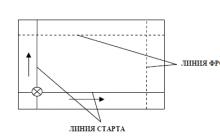
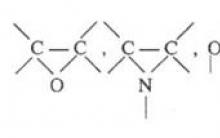
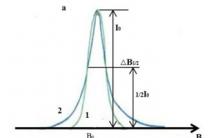
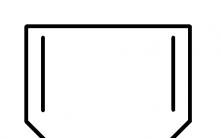

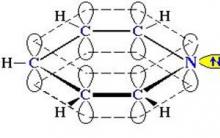




Pink wallpaper: delicate color interior
What time was the founding of MGU
Manganese (II) Bromide Composition and Molar Mass Molar Mass Calculation
Method of obtaining peroxidase from horseradish roots Electrochemical behavior of horseradish peroxidase substrates
What kind of radiation belongs to photon radiation Photon radiation is divided into X-ray and